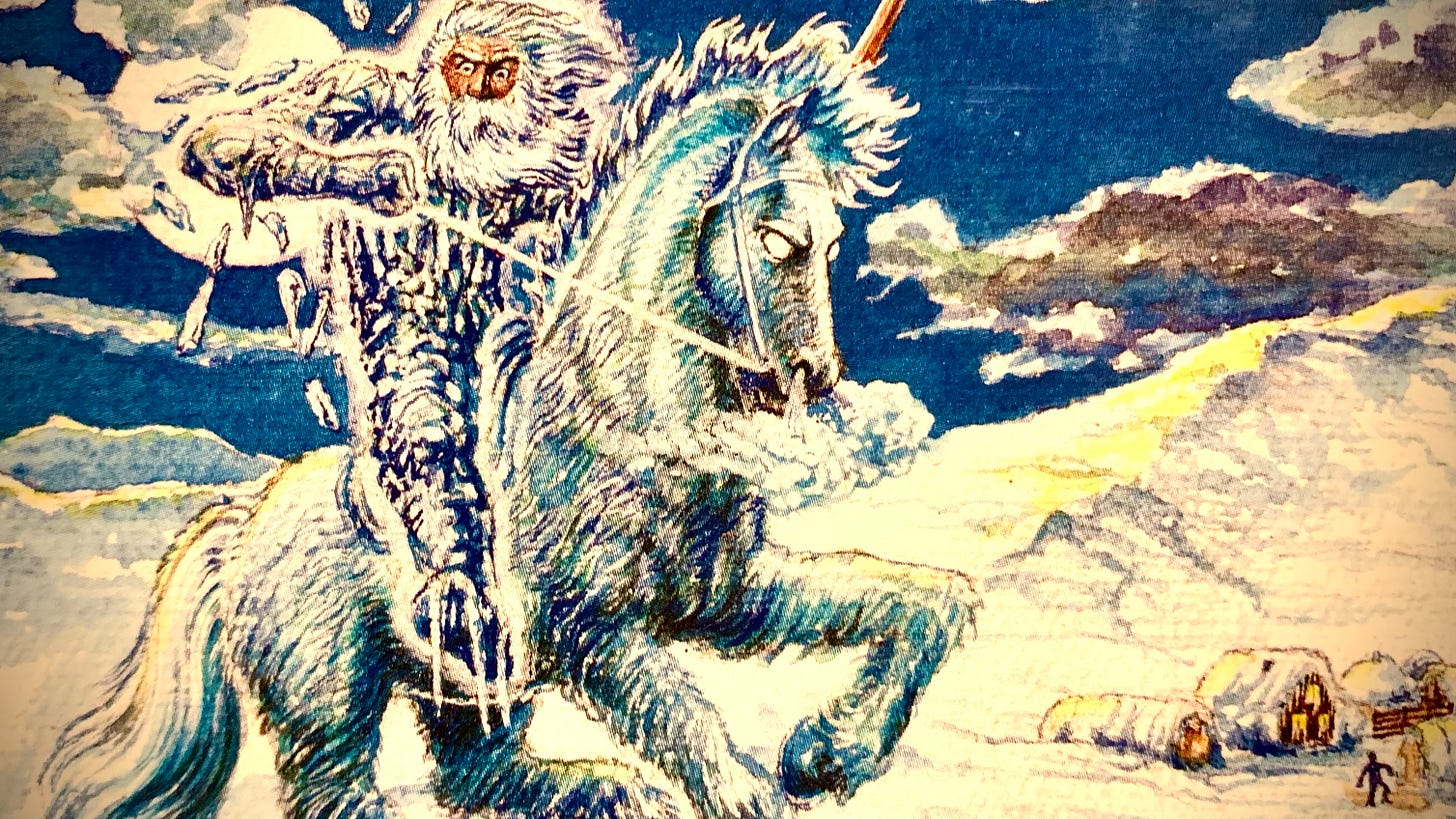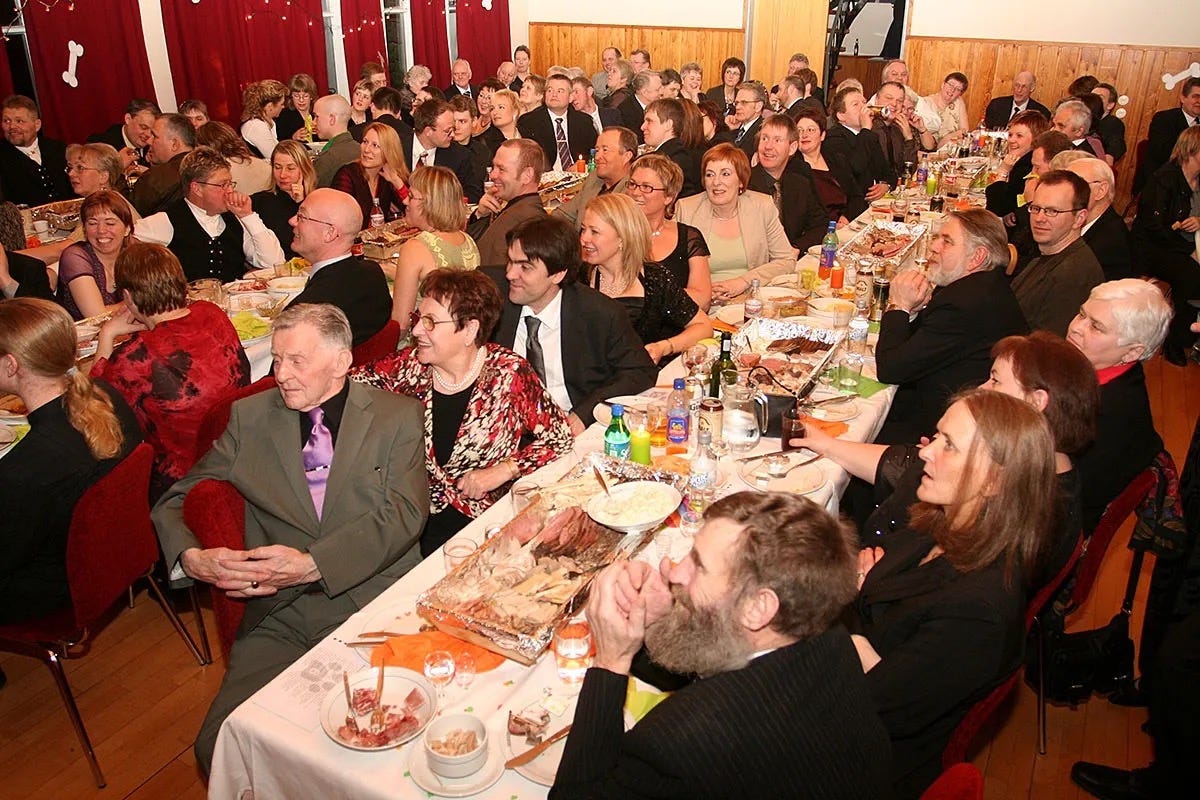Þorrablót: A Celebration of Icelandic Tradition
Each year, the Friday that falls between the 19th and 25th of January marks the beginning of Þorri, a month from the ancient Icelandic pagan lunar calendar. The lunar system meant that the months were variable in length and timing. For over a century, this occasion has been celebrated in Iceland with convivial gatherings among colleagues or members of associations. These gatherings feature speeches, the recitation of traditional poems, communal singing, and (starting from the middle of the last century) the consumption of traditional Icelandic foods—specialities that now appear in supermarkets only in January but are otherwise rarely eaten.
One of the earliest mentions of the name Þorri can be found in a 12th-century text, GKS 1812 4to, a Latin-Icelandic miscellany that includes texts on chronology, horoscopes, and other topics. It explains that Þorri begins on a Friday, when the sun enters the sign of Aquarius:
“The sun enters Aquarius three nights before St Agnes’ Day. This month is considered dry by the southern peoples. We call it Þorri.”
Þorri is also mentioned in Snorri Sturluson’s Edda, as well as in Iceland’s oldest legal code, the Grágás (“Grey Goose”). However, it rarely appears in other sources, such as the Icelandic sagas. In the Flateyjarbók version of Orkneyinga Saga (Saga of the Orcadians), Þorri is personified as a primordial force, a symbolic meaning that the name seems to carry in ancient texts. In the tale (preserved in the Flateyjarbók manuscript) “Frá Fornjóti og hans ættmennum“, it is said that people would have offered him sacrifices, but otherwise no mention of a sacrifice for Þorri is ever found.
The Etymology of Þorri
The origins of the word Þorri remain debated, and several interpretations exist:
1. Connection to dryness: Þorri may derive from þurr (“dry”), as January was traditionally seen as cold and dry, unlike the wetter February.
2. Peak of winter: Þorri, or meginþorri (“majority”), could signify the height of winter.
3. Decline: Linked to the verb þverra (“to wane”), Þorri might refer to dwindling food supplies or the lessening grip of winter.
4. Thor’s diminutive: The most popular theory ties Þorri to the god Thor, imagining him as a protective figure during the harshest part of winter.
Þorrablót: The Sacrifice of Þorri
The term Þorrablót, found in the text cited above, referred to a sacrificial rite to Þorri. Today, it describes the gatherings typically held in the course of the month Þorri. Some modern commentators argue that Þorrablót was an ancient midwinter festival in Norse culture. However, the existence of another midwinter festival—jól (now “Christmas”)—complicates this interpretation.
Reconstructing pre-Christian ceremonies is nearly impossible due to the lack of detailed sources. Romantic-era philologists often superimposed their ideas of organised religion onto pre-Christian Norse culture, which was far more decentralised and locally varied. Thus, modern versions of Þorrablót are nothing more than modern inventions with ancient names rather than authentic revivals.
Þorri in the Modern Era
In the 17th and 18th centuries, Þorri was personified in poetry as the bringer of frost. Some families practised rituals to “welcome” Þorri, such as inviting him into their homes to soften the harshness of winter. These rituals were likely apotropaic, intended to ward off misfortune, though their origins and meanings are unclear.
The first recorded modern Þorrablót occurred in 1867 as a secret event organised by a society in Reykjavík. By 1873, Icelandic students in Copenhagen hosted a Þorrablót featuring traditional songs, speeches, and camaraderie, part of the Romantic-era fascination with reimagining national identities. In 1874, Akureyri held the first public Þorrablót, a statement of Icelandic cultural identity amidst Danish rule.
By the early 20th century, Þorrablót had spread nationwide, evolving into dinners interspersed with speeches, songs, and traditional ballads—a format still seen at certain Icelandic corporate events, particularly Christmas gatherings.
Þorramatur: The Food of Þorri
From the 1950s onwards, Þorrablót became associated with the consumption of þorramatur (“food of Þorri”), a collection of preserved foods from Iceland’s past, such as sour whey-preserved meats and offal. These foods, once vital for winter survival, are now served on wooden trays (bakkar) and available in supermarkets and restaurants every January.
The term þorramatur first appeared in 1958, but its popularity soared thanks to Halldór Gröndal, a Reykjavík restaurateur who served traditional foods at his establishment, Naustin, during Þorrablót in 1954. His initiative capitalised on nostalgia for foods no longer widely available, sparking a tradition that continues to this day.
The Decline of Þorrablót
Although Þorrablót remains a cherished tradition, it is increasingly seen by younger Icelanders as outdated and “for boomers.” However, þorramatur has found a new audience among tourists, who are drawn to its novelty and historical charm. Icelanders have cleverly marketed this once-abandoned cuisine, turning it into an attraction alongside the country’s premium culinary offerings.
Thus, while Þorrablót itself may wane in popularity, the legacy of Þorri continues to evolve, blending past and present into a uniquely Icelandic experience.
—My main source for Icelandic folklore and traditions is Árni Björnsson, whose monumental work, Saga daganna (“The History of Days”), which remains an invaluable compilation of Icelandic traditions tied to annual events.






